Disclosure: This post contains affiliate links. As an Amazon Associate, I earn from qualifying purchases.
Introduction
The best wheelchair cushions are more than just about comfort—they’re essential for protecting skin, improving posture, and preventing serious complications. As a wound care physician, I’ve seen firsthand how the right cushion can reduce pressure, prevent painful ulcers, and make daily life significantly easier. The wrong cushion, on the other hand, can lead to skin breakdown, discomfort, and even hospitalizations.
In this guide, I’ll break down the different types of wheelchair cushions, share the pros and cons of each, and highlight my top recommendations. Whether you’re looking for affordability, durability, or advanced pressure relief, this overview will help you make an informed choice backed by both medical insight and practical experience.
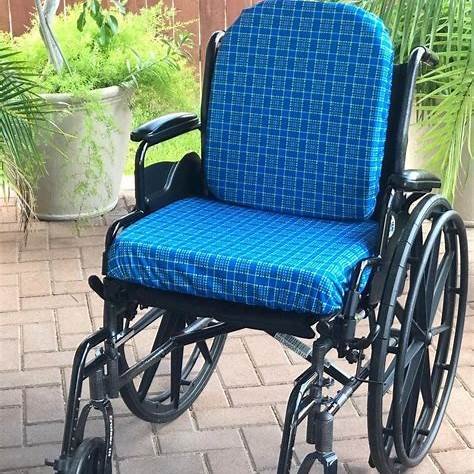
Why Wheelchair Cushions Matter
– Pressure Relief: Distributes body weight evenly to reduce the risk of sores.
– Posture Support: Encourages proper spinal and hip alignment.
– Skin Protection: Reduces friction, moisture, and heat buildup.
– Comfort & Confidence: Sitting longer becomes easier, allowing more independence.
Best Wheelchair Cushions by Type – 2025
1. Foam Cushions
Best for: Short-term use, budget buyers, or people who need something lightweight and portable.
Choosing the best wheelchair cushions is crucial for maximizing comfort and preventing pressure sores.
Foam cushions are the simplest and most affordable option. They provide a soft, lightweight base that’s easy to carry, which makes them popular for occasional use or for users who transfer frequently. The downside is that foam tends to compress over time, which means it may lose its supportive qualities faster than gel, air, or hybrid options.
From a clinical standpoint, I’ve seen foam cushions work well for users with low pressure-injury risk who just need basic comfort. For higher-risk individuals, however, foam alone is rarely enough to provide long-term skin protection. Still, as a budget-friendly entry point, foam cushions are hard to beat.
Here’s a quick breakdown of foam cushion strengths and drawbacks:
Pros:
- Lightweight and easy to transport
- Inexpensive compared to other cushion types
- Simple, no-maintenance design
Cons:
- Can flatten or compress with extended use
- Limited pressure redistribution
- Shorter lifespan than gel or air cushions
Top Pick: Drive Medical Comfort Cushion – affordable and reliable for basic use.
👉 Available now on Amazon
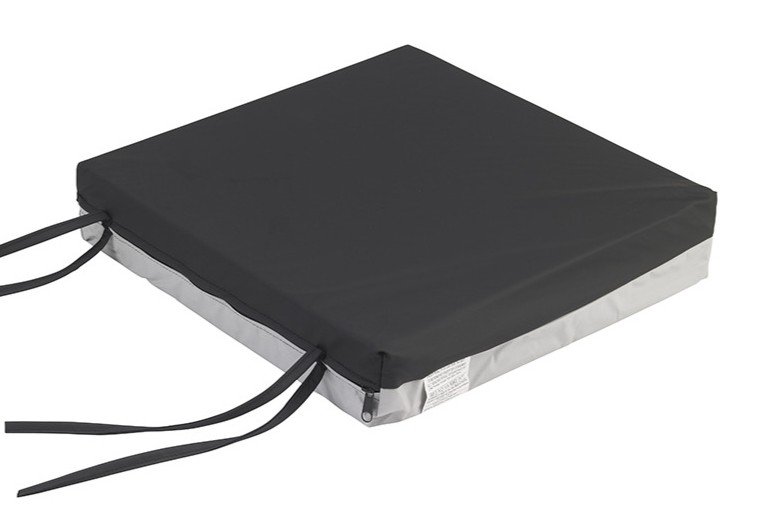
2. Gel Cushions
Best for: Users needing moderate pressure relief and cooling.
Gel cushions combine a foam base with gel inserts that mold to the body, helping distribute weight more evenly across sitting surfaces. One of their biggest advantages is cooling — unlike foam, gel doesn’t trap as much heat, making it a comfortable choice for people who sit for long periods or are prone to sweating.
From a clinical perspective, I’ve seen gel cushions benefit individuals with mild to moderate risk of skin breakdown. They provide better protection than foam, but they do require occasional repositioning since gel can shift inside the cushion. They’re also heavier, which can make them less convenient for users who frequently move their cushion in and out of a chair.
Here’s a quick breakdown of gel cushion strengths and drawbacks:
Pros:
- Gel molds to the body for a custom feel
- Redistributes pressure across high-risk areas
- Stays cooler than foam, reducing heat and moisture buildup
Cons:
- Heavier than foam
- Gel may shift, requiring repositioning
- More expensive than basic foam cushions
Top Pick: Drive Medical Gel “E” 3″ Wheelchair Cushion – combines gel inserts with a foam base for pressure redistribution and cooling comfort.
👉 Available now on Amazon.
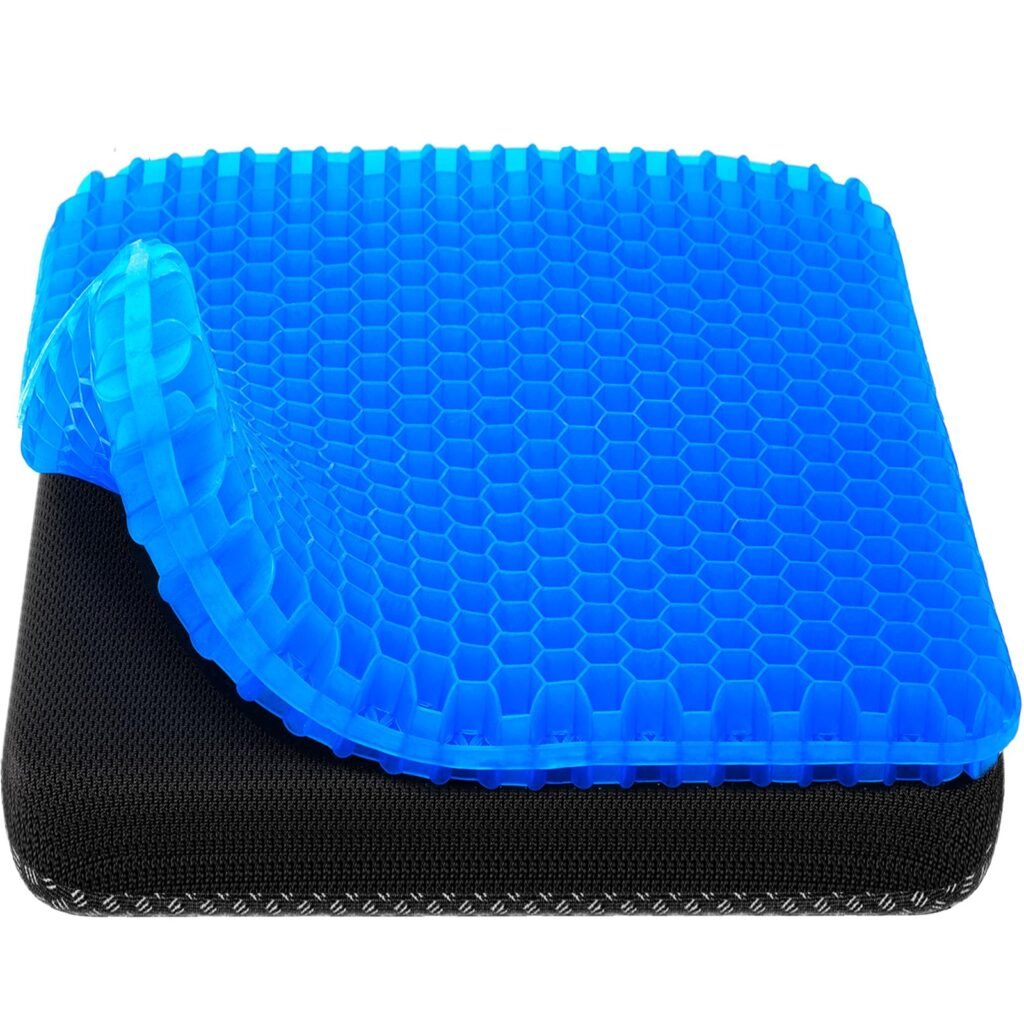
3. Air Cushions
Best for: High-risk users needing maximum skin protection.
Air cushions are widely regarded as the gold standard for pressure redistribution. They use interconnected air cells that adjust under the user’s weight, creating even support across the sitting surface. The result is excellent skin protection, which is why air cushions are trusted in hospitals, rehab centers, and long-term care facilities.
From my clinical experience, air cushions are often the difference between preventing pressure ulcers and ending up with one. The ability to fine-tune firmness also makes them highly customizable for different body types. However, they do require more maintenance — regular inflation checks are essential — and they can puncture if not handled carefully.
Here’s a breakdown of air cushion strengths and drawbacks:
Pros:
- Adjustable firmness for personalized comfort
- Excellent pressure redistribution
- Widely trusted in clinical care for pressure ulcer prevention
Cons:
- Require regular inflation checks
- Can puncture if not maintained properly
- Heavier and pricier than foam or gel cushions
✅ Top Pick: ROHO Single Compartment Air Cushion
Trusted in hospitals and clinical care, this cushion provides reliable pressure relief for high-risk users.
👉 Available now on Amazon
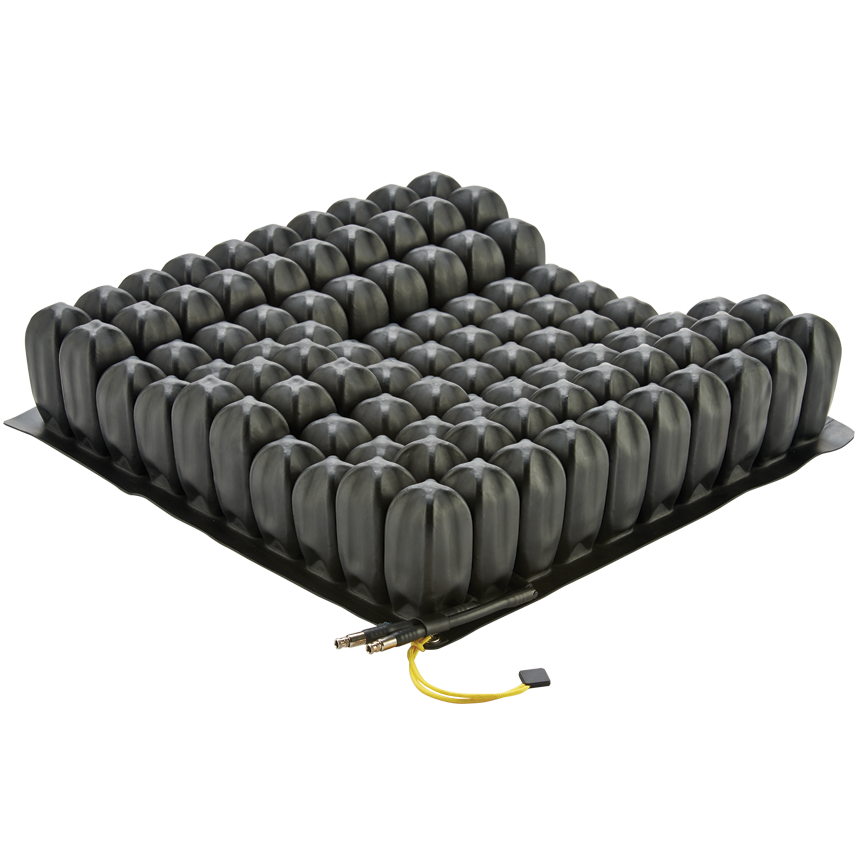
💰 Budget Option: ROHO Mosaic Cushion
An affordable entry-level air cushion that provides good comfort and basic pressure redistribution, though not as advanced as premium ROHO models. 👉 Available now on Amazon
🏥 Clinical Standard: ROHO High Profile Single Compartment
This cushion is considered the clinical gold standard, with 4-inch interconnected air cells that provide maximum pressure relief and stability. It’s widely used in hospitals, rehab centers, and nursing homes for patients at highest risk of pressure injury. Based on my medical experience, this is one of the most effective cushions for long-term ulcer prevention.
👉 Available now on Amazon
4. Hybrid Cushions
Best for: Users who want the stability of foam combined with the advanced pressure relief of air or gel.
Hybrid cushions are designed to give you the “best of both worlds.” They combine the structure and stability of foam with either air or gel inserts for superior pressure redistribution. This makes them a strong option for users at moderate to high risk of skin breakdown who also need a cushion that feels stable during transfers or long sitting periods.
From my clinical experience, hybrids are often an excellent choice for patients who don’t tolerate full air cushions well (too much shifting or maintenance) but still need more protection than foam or gel alone can provide. They are, however, heavier and more expensive, which makes them less practical for occasional or short-term use.
Here’s a quick breakdown of hybrid cushion strengths and drawbacks:
Pros:
- Balanced support (comfort + skin protection)
- Very comfortable for long-term sitting
- Good mix of stability and pressure relief
Cons:
- More expensive than foam or gel alone
- Heavier and less portable
- May still require some repositioning for best results
⭐ Top Pick: ROHO Hybrid Elite
A premium hybrid cushion that combines interconnected air cells with foam support for outstanding performance. Available now on Amazon.
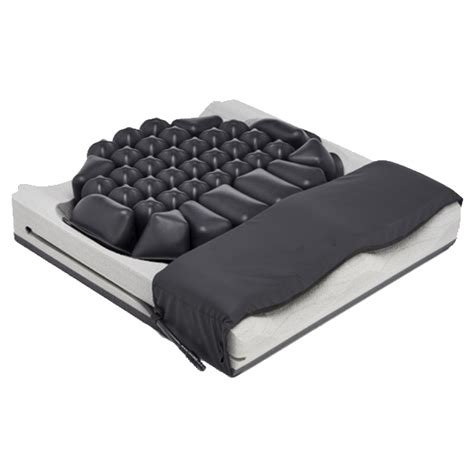
Note: The Hybrid Elite comes in single- and dual-compartment versions, as well as multiple widths (typically 16″–20″). We’ve highlighted the 17.75″ x 18.75″ version here, which has the strongest, albeit sparse, customer feedback. If your chair is narrower or wider, Amazon lists other sizes so you can select the best fit.
Buying Guide: What to Look For
When choosing a wheelchair cushion, comfort is only one part of the decision. Here are the key factors I recommend considering:
- Weight Capacity – Ensure the cushion is designed to support your body weight without compressing too quickly.
- Cover Material – Look for breathable, washable, moisture-resistant covers that extend cushion life.
- Portability – If you move cushions between chairs or travel often, lighter options are easier to handle.
- Maintenance – Foam cushions require little upkeep, while air cushions need inflation checks and adjustments.
- Longevity vs. Price – Premium cushions last longer, provide better skin protection, and often save money in the long run.
👨⚕️ As a wound care physician, I’ve seen many patients choose based on price alone, only to face skin breakdown later. Investing in the right cushion is not just about comfort — it’s about protecting your health and independence.
Top Recommendations: Best Wheelchair Cushions in 2025
| Category | Top Pick | Best For | Link |
|---|---|---|---|
| 💸 Budget Choice (Foam) | Drive Medical Comfort Cushion | Affordable, lightweight, basic comfort | View on Amazon |
| ❄️ Best Gel Option | Drive Medical Gel “E” 3 Cushion | Cooling + moderate pressure relief | View on Amazon |
| 💰 Best Budget Air Cushion | ROHO Mosaic Cushion | Entry-level air support, lower cost | View on Amazon |
| 🏥 Best Clinical Air Cushion | ROHO High Profile Single Compartment | Maximum skin protection, clinical standard | View on Amazon |
| ⭐ Best Hybrid Option | ROHO Hybrid Elite | Balanced support + advanced protection | View on Amazon |
Beyond seating comfort, mobility aids like walkers can make a huge difference. Check out my in-depth review of the top walkers and rollators for seniors to find safe, supportive options for everyday use.
Final Thoughts
The right wheelchair cushion is more than a comfort upgrade — it’s an investment in health, mobility, and independence. Over the years, I’ve seen how the wrong cushion can contribute to painful ulcers and limited mobility, while the right one can keep patients active and independent for years.
If you’re on a budget, foam or the ROHO Mosaic can be a good start. But if you’re at higher risk of skin breakdown, I strongly recommend air or hybrid cushions for long-term protection.
👉 Ready to find the cushion that fits your needs? Explore the options above and check today’s prices on Amazon.
Disclaimer
This article is for educational purposes only. It does not replace medical advice. If you are at risk for pressure injuries or have wounds, consult a healthcare provider before selecting a cushion.
